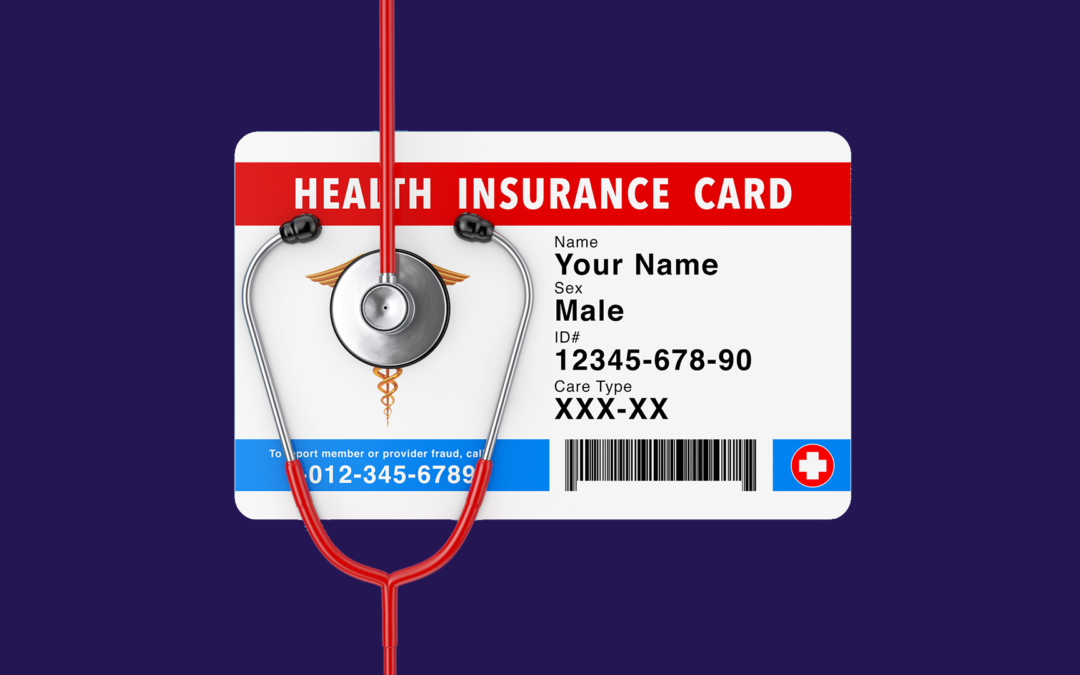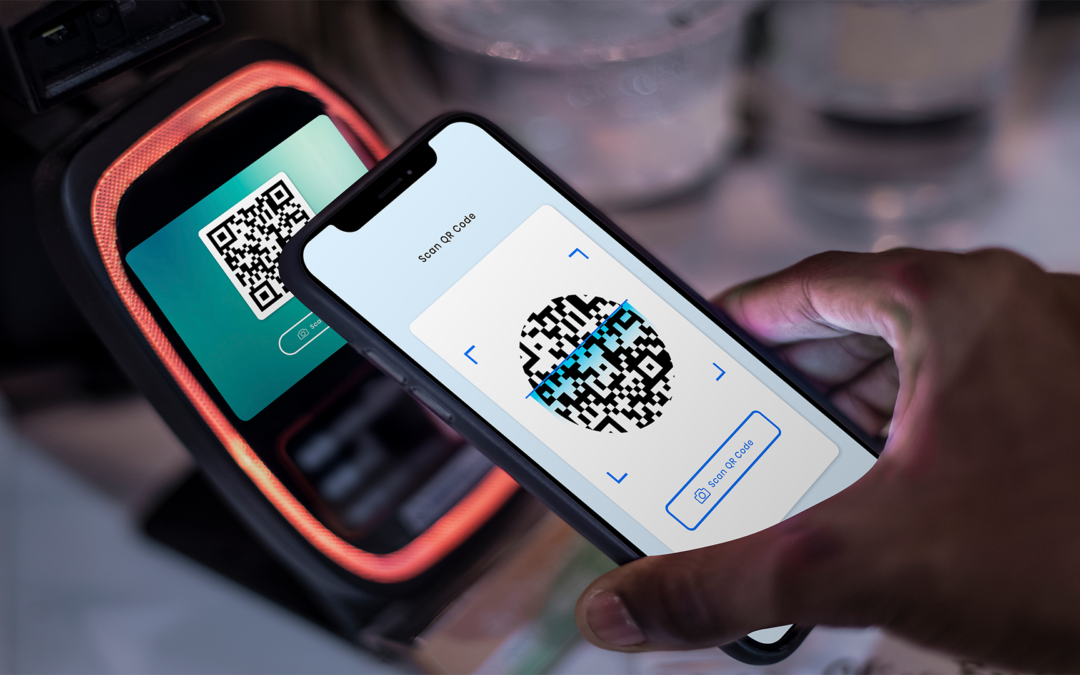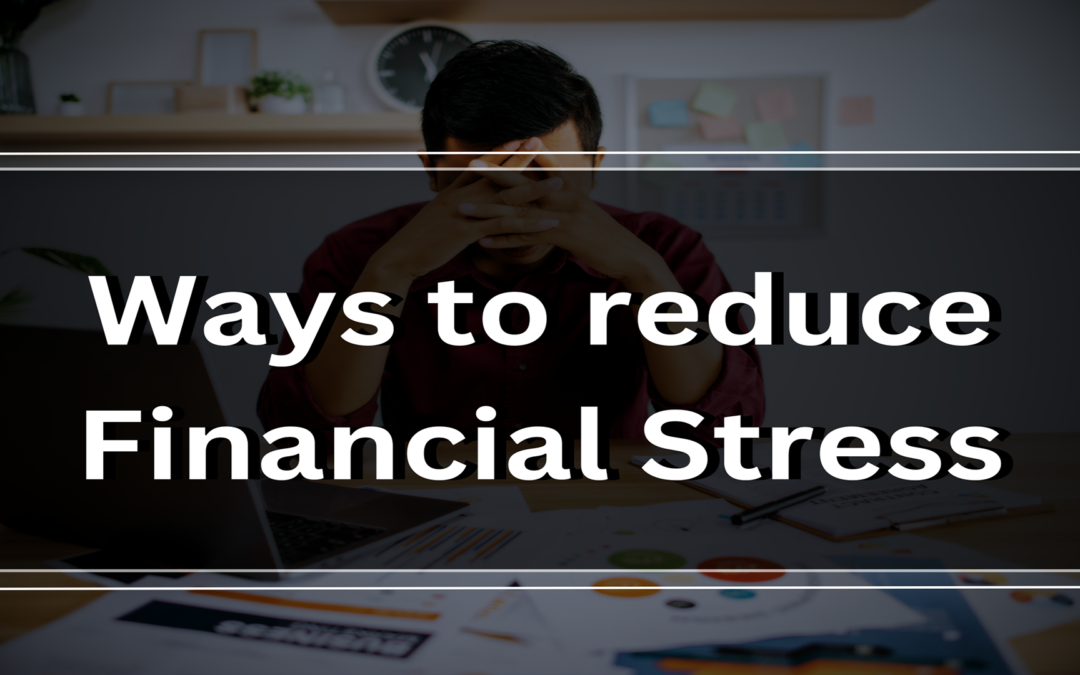
by Piousmary Lobo | Mar 27, 2023 | Investment
A Pre-Approved Loan can be a great way to reduce the stress of loan approval. With Pre Approved Personal Loan eligibility and advantages, you could get the loan you need without having to go through the complicated application process.
What is a Pre-Approved Loan?
Pre-approval means that you have met the lender’s initial criteria for a loan and have been given an indication that your loan will likely be approved, though it is not a guarantee. The advantage of having a pre-approved loan is that you don’t have to go through the complicated loan application process and wait weeks for approval.
The benefits of a pre-approved loan include:
- You can shop around without worrying about your credit score being affected by multiple inquiries.
- Easier and faster access to loan funds as soon as they are approved.
- Pre-approval is likely to bring you better loan terms, lower interest rates, and more favorable repayment options.
- Your loan amount may be determined by the bank and the amount you are eligible for will be higher than when applying for a regular loan.
Reasons Why a Loan May Be Denied After Pre-Approval
- Change in income or credit score since the pre-approval process started.
- Unpaid bills, late payments, bankruptcies, or other financial issues that weren’t included in your loan application
- Insufficient down payment amount or inability to meet the lender’s requirements for loan coverage.
- The property not meeting the appraised value or standards set by the lender.
Different Types of Pre-approved Loans are Available
- Home loan: A pre-approval for this type of loan will give you an estimate of how much the lender is willing to lend you so that you can start shopping around for a home that is within your budget.
- Auto Loan: The pre-approval will provide you with an estimate of how much you can spend on a new or used vehicle.
- Student Loan: A pre-approved student loan will give you an idea of how much money you are eligible for so that you know how much tuition and fees you need to cover before applying.
- Credit card loan: this type of loan will give you an estimate of how much credit a lender is willing to provide and at what rate.
- Depending on your needs, you may be able to find a loan that best suits your requirements. It’s important to do your research and compare rates from different lenders before making a final decision.
Checklist for Applying for a Pre-approved Loan
Here is a checklist for applying for a pre-approved loan:
- Check if you meet the bank’s eligibility criteria
- Know your credit score and make sure it’s accurate
- Gather the necessary documents such as financial statements, proof of income, bank statements, and other documents
- Understand the loan terms and conditions
- Shop around for the best rate
- Ask questions about fees and other potential charges associated with taking out a loan
- Submit the loan application
- Wait for the bank’s response.
Tips to Improve Your Chances of Getting Approved for a Pre-approved Loan
- Make sure all your credit accounts are up to date and in good standing
- Make sure your credit score is as high as possible
- Have a solid financial history with the bank you are applying with
- Try to keep your debt-to-income ratio below 40%
- Have a good credit score of at least 700
- Make sure all your documents are up to date and accurate.
- Pay off any outstanding debts before you apply for a loan
- Have a solid history of paying bills on time
- Research lenders and compare rates to find the best one for you.
Conclusion
Hopefully, this article has given you an insight into what a Pre-Approved Loan is, its benefits, and potential reasons why it may be denied after pre-approval. Besides, we have also looked at the different types of pre-approved loans available and provided a checklist for applying for one along with some tips to help improve the chance of approval.
Also, check out our article on Top Personal Loan Rejection Reasons and Solutions.
Hopefully, this has been helpful! Good luck with your loan application journey.

by Piousmary Lobo | Mar 15, 2023 | Investment
Health Insurance has been an important part of life always. It provides financial protection from unexpected medical expenses, access to quality healthcare services, and peace of mind knowing that you are covered in the event of a medical emergency. Having a Health Insurance Card is the key to unlocking these benefits and more. In this blog, we’ll discuss what exactly a Health Insurance Card is, its various important benefits, how it works, and some things to consider before getting one.
Read What is Health Insurance? to get more information on health insurance.
What is a Health Insurance Card?
A Health Insurance Card is a card issued by an insurance company that provides you with coverage for medical expenses. It typically includes details such as your name, the policy number and type of coverage, and any deductibles or copayments associated with it.
Important Benefits of Having a Health Insurance Card
• Access to quality healthcare services
You are eligible to receive care from participating providers in your network. This means that you will have access to the best possible care available at the most affordable cost.
• Financial protection from unexpected expenses
In the event of an emergency or illness, having a health insurance card can provide financial protection from medical bills that may otherwise be too expensive to cover out-of-pocket.
• Peace of mind
Having a health insurance card gives you peace of mind knowing that you are covered in the case of a medical emergency.
How Does it Work?
It works by providing coverage for certain types of medical expenses. When you use your Health Insurance Card, the insurance company pays for eligible services and treatments according to the terms specified in your policy. You may also be responsible for paying any applicable copayments or deductibles associated with each service or treatment received.
Important Things to Know Before Getting a Health Insurance Card
It’s important to understand how they work and the various types of coverage available. Here are some things to consider:
• Types of Coverage
Different health insurance policies provide different levels of coverage depending on your needs and budget. Be sure to research the various types of coverage available and choose the one which is right for you.
• Network Providers
Some plans require you to receive care from specific providers within their network for them to pay for eligible services and treatments. Be sure to check which providers are included in your plan before signing up.
• Deductibles & Copayments
Many health insurance plans have deductibles and copayments associated with them. It’s important to understand these terms so that you are not surprised when it comes time to pay for services.
• Cost
Health Insurance plans can vary in cost depending on the type of coverage and the provider. Be sure to shop around and compare prices before signing up for a plan.
Steps for Getting and Using Your Health Insurance Card
Once you have chosen a plan that fits your needs, here are some steps to take to get your Health Insurance Card and start using it:
Reach out to your provider directly or visit their website to find out what information being needed to apply for a Health Insurance Card.
• Submit Your Application
Fill out an application and submit it to your provider. This will typically include providing information such as your name, address, date of birth, and Social Security number.
• Receive Your Card
Once you have submitted the necessary information and completed any other required steps. You should receive your Health Insurance Card in the mail within a few weeks.
• Use Your Card for Eligible Services
When you use your Health Insurance Card for medical services or treatments that are covered by your plan. The insurance company will pay for them according to the terms specified in your policy.
• Track Your Medical Expenses
Keep track of all medical expenses, so that you can easily review them when it comes time to renew your policy.
Conclusion
Having a Health Insurance Card is an important part of taking care of your health and protecting yourself from unexpected medical bills. Researching the various types of coverage available is very important. And by understanding how they work, you can make sure that you are getting the best possible care at the most affordable cost.
Read more about India’s national health insurance scheme for more information.
So, get informed and get insured! That way, you’re prepared for whatever life throws your way. Good luck!

by Piousmary Lobo | Mar 15, 2023 | Investment
UPI (Unified Payments Interface) is a digital payment platform in India that enables instant money transfers between bank accounts. To use UPI, you need a UPI ID and a UPI PIN. This blog will discuss what a UPI PIN is, how to create and reset it, the importance of a UPI Pin, and how does it differ from MPin?
What is UPI PIN?
UPI PIN is a four or six-digit secret code to authenticate UPI transactions. The UPI PIN is used to protect your UPI ID from unauthorized access and to ensure that only you can authorize transactions from your account.
Read about the advantages and disadvantages of UPI PIN in jarofknowledge.com
How to Create a UPI PIN?
Creating a UPI PIN is easy and can be done in a few steps:
- Download a UPI-enabled app like BHIM, Google Pay, or PhonePe
- Link your bank account with the app
- Go to the UPI PIN section in the app
- Enter your bank account details, including your registered mobile number
- You will receive an OTP (One-Time Password) on your registered mobile number
- Enter the OTP and set your UPI PIN
It is important to note that the UPI PIN should be confidential and not shared with anyone.
How to Reset a UPI PIN?
If you forget your UPI PIN, you can easily reset it by following these steps:
- Open the UPI app
- Go to the UPI PIN section
- Select the option to reset UPI PIN
- Enter your bank account details, including your registered mobile number
- You will receive an OTP on your registered mobile number
- Enter the OTP and set a new UPI PIN
The importance of a UPI Pin
The importance of a UPI PIN lies in its role as a safeguard for the user’s bank account and personal information. The UPI PIN is used to authenticate UPI transactions, ensuring that only the user can authorize transactions from their account. This means that even if someone else has access to your UPI ID, they cannot authorize transactions without the UPI PIN.
UPI transactions are highly secure, but the UPI PIN provides an additional layer of security that makes it even more difficult for unauthorized individuals to access your bank account and make transactions. In the event of any unauthorized access to your UPI ID, the UPI PIN acts as a barrier that makes it more difficult for the unauthorized user to carry out transactions.
Moreover, the UPI PIN is a user-created code, which means that the user is in complete control of their UPI transactions. This gives the user peace of mind knowing that their personal and financial information is protected.
How does UPI Pin differ from MPin?
UPI PIN (Unified Payments Interface Personal Identification Number) and MPIN (Mobile Personal Identification Number) are both types of personal identification numbers used for digital financial transactions in India. However, they serve different purposes and are used in different contexts.
UPI PIN is used to authenticate UPI transactions. It allows users to transfer money instantly between bank accounts using a mobile app. The UPI PIN is required to authorize transactions. It ensures that only the user can carry out transactions from their bank account.
On the other hand, MPIN is used for mobile banking transactions. Such as checking account balances, viewing transaction history, and making payments through a mobile banking app. MPIN acts as a password to secure the user’s mobile banking transactions. MPIN also ensures that only the user can access their banking information and carry out transactions.
In short, UPI PIN is used for UPI transactions, while MPIN is used for mobile banking transactions. Both serve as personal identification numbers to ensure the security and protection of the user’s financial information and transactions.
Conclusion
The UPI PIN is an essential component of the UPI system. It plays a crucial role in ensuring the safety and security of UPI transactions. By creating a strong and unique UPI PIN, users can ensure that their bank account and personal information are protected from unauthorized access.

by Piousmary Lobo | Mar 15, 2023 | Investment
When it comes to personal finance, saving money is a critical component for financial security and reaching your goals. One of the best ways to achieve these objectives is by creating a savings account that meets your needs. From traditional accounts to high-yield options, there are various types of savings accounts available – each offering distinct advantages and disadvantages. In this blog post, we’ll explore the benefits and drawbacks associated with different kinds of savings accounts so you can make an informed decision!
Regular savings account:
A basic savings account doesn’t require an astronomical amount to get started. It offers a low-interest rate, usually lower than 1% annually, and provides convenient access to your money should you need it in the case of an emergency. Regular savings accounts are optimal for those with small balances who want ease of use and peace of mind.
Pros:
- Easy to open
- Access to funds anytime
- No minimum balance required
Cons:
- Low-interest rate
- Monthly maintenance fees
High-yield savings account:
High-yield savings accounts are the ideal solution for savvy savers seeking greater returns on their deposits. As implied by its title, these accounts offer significantly higher interest rates than regular and require customers to maintain a larger balance in order to reap the benefits.
Pros:
- Higher interest rate
- No monthly maintenance fees
- Easy access to funds
Cons:
- High minimum balance requirement
- Limited transactions
Certificate of deposit (CD):
A CD is the perfect savings account for individuals who have a significant sum of money and want to lock in an advantageous fixed interest rate over a designated period, ranging from several months up to multiple years. This type of savings option offers higher-than-average returns compared with regular accounts.
Pros:
- Guaranteed fixed interest rate
- No monthly maintenance fees
- Low risk
Cons:
- Penalty for early withdrawal
- Money locked in for a specified period
- Low liquidity
Money market account:
Looking for a better return on your savings? A money market account is the perfect solution, as it offers higher interest rates and gives you access to check-writing capabilities. This type of account is great if you need quick access to your funds while still earning an attractive rate of return.
Pros:
- Higher interest rate
- Check-writing capabilities
- Easy access to funds
Cons:
- High minimum balance requirement
- Limited transactions
Online savings account:
Are you looking to maximize your investments? Online savings accounts make it easy! With online banks offering higher interest rates than traditional banking institutions, due to their lower overhead costs, this is the perfect way for anyone seeking an increased return on investment.
Pros:
- High-interest rate
- No monthly maintenance fees
- Easy access to funds
Cons:
- Limited branch access
- Limited in-person customer service
Ultimately, it all comes down to your financial goals and needs when selecting a savings account. If earning higher interest rates appeals more to you, go for the high-yield version. Are you looking for an effective way to earn a solid return on your investments? If you want a fixed interest rate with a lump sum of money, then CDs might be the best choice for you. However, if higher rates and check-writing capabilities sound more appealing, then consider opening up a Money Market Account.
Also to know more about zero-balance savings accounts click on the link.
Lastly, if neither of those appeal to you but rather high-interest rates without in-person customer service is what sounds most desirable – Online Savings Accounts will meet those criteria perfectly! Whatever your preferences maybe it’s important to thoroughly compare each type of account so that the one which fits your goals can be identified easily.

by Piousmary Lobo | Mar 14, 2023 | Investment
Financial stress affects us all in different ways, but it can have a serious impact on our mental health. From feelings of anxiety and depression to difficulty concentrating, financial stress can take an emotional toll. In this blog post, we’ll explore the link between money and mental health, how to recognize the signs of financial stress, strategies for reducing or managing financial stress, and tips for taking care of your mental health during times when money is tight. By understanding how to identify financial stress and learning effective coping strategies you can improve your quality of life and create lasting change. Let’s get started!
What is Financial Stress and How Does it Affect Mental Health?
Financial stress is the result of feeling overwhelmed and anxious about your financial situation. It can arise from a lack of money, a sudden unexpected change in financial status, or simply not understanding how to manage your finances. Financial stress can affect your mental health in many ways, including causing physical symptoms such as headaches, nausea, and insomnia; impairing concentration and memory; and leading to feelings of depression, anxiety, and even hopelessness. Due to the stress, people tend to give into vices such as smoking and drinking also which might lead to health issues
Recognizing the Signs of Financial Stress
1. Difficulty Concentrating and Memory Loss
It can cause mental fatigue, making it difficult to concentrate and remember things. You may often feel overwhelmed or unable to process information as quickly or accurately as you would normally. If your financial worries are increasing, pay special attention to your concentration levels and if necessary seek help.
2. Feeling Overwhelmed or Anxious
It can cause intense feelings of worry, fear, and even panic. If you feel like you are constantly worrying about money, it’s time to take action and find ways to reduce your financial stress.
3. Difficulty Making Decisions
It can make it difficult to make decisions, whether they are everyday decisions or those regarding your finances. If you experience this symptom, take a step back and think about the potential consequences of each decision before committing.
Coping with Financial Stress
1. Take Control of Your Finances
The first step in reducing financial stress is to take control of your finances. This can include creating a budget, cutting expenses where possible, increasing income if you can, and using financial resources such as credit counseling or debt consolidation.
2. Find Support
Seeking help from trusted friends and family can be invaluable when dealing with financial stress. They may be able to provide emotional support and financial advice, as well as help you find resources to reduce your stress.
3. Get Professional Help if Necessary
If you are experiencing extreme financial anxiety or depression it is important to seek professional help. There are a variety of mental health professionals who specialize in helping people cope with financial stress, such as financial counselors and therapists.
Effects of Financial Stress on health:
This can lead to physical symptoms such as headaches, nausea, and insomnia, which can have a harmful effect on overall health.
Financial stress has been linked to an increase in levels of the stress hormone cortisol, which can weaken the immune system and cause chronic health problems such as high blood pressure, heart disease, and diabetes.
Can also lead to feelings of anxiety, depression, and hopelessness, which can have a significant impact on mental health and well-being.
This can lead to poor eating habits, due to a lack of time or money for healthy food options. This can further increase the risk of chronic illnesses and mental health issues such as depression.
Financial worry can contribute to low self-esteem, making it difficult to find the motivation or courage needed to seek help in times of financial hardship.
Strategies to Reduce or Manage Financial Stress
1. Make a Budget:
Creating and sticking to a budget is one of the most important tools. Making a budget can help keep your spending in check, track where your money is going, and identify areas you can cut back on spending.
2. Cut Expenses Where Possible:
Taking a hard look at where your money is going can help you identify areas where you can cut back. This may include reducing luxuries or going without certain expenses in order to save more money.
3. Prioritize Your Goals:
Take a moment and think about what’s most important to you when it comes to finances. Identifying and prioritizing your financial goals can help you focus on what’s important and reduce financial stress.
Tips for Taking Care of Your Mental Health
1. Set Boundaries
It is important to set boundaries. This can include limiting conversations about money, taking a break from money-related tasks, or setting aside specific times to check your finances.
2. Take Breaks
Taking breaks from financial stress is essential for your mental health. Go for a walk, listen to music, read a book, or do something else that brings you joy and allows you to relax.
3. Practice Self-Care
It can be easy to forget self-care when dealing with financial stress. But making time for self-care is essential to keeping your mental health in check. This can include getting enough sleep, eating healthy meals, exercising regularly, and engaging in relaxing activities such as yoga or meditation.
4. Find Positive Coping Strategies
It is important to find positive coping strategies when dealing with financial stress. This may include taking time to relax, engaging in activities such as reading or listening to music, participating in mindfulness practices such as yoga or meditation, or talking to a trusted friend or family member.
Activities to reduce financial and mental stress
Physical Activities to Reduce Financial and Mental Stress:
1. Exercise:
Regular exercise can help reduce the physical symptoms of financial stress, such as headaches, insomnia, and chronic illness.
2. Yoga and Meditation:
Mindfulness practices such as yoga and meditation can help relieve anxiety associated with financial stress.
3. Walks in Nature:
Taking a walk or going for a hike in nature can be calming and provide much-needed relief from financial worries.
4. Breathing Exercises:
Doing breathing exercises can help lower your heart rate, relax your muscles, reduce tension, and calm the mind when dealing with financial stress.
Mental Activities to Reduce Financial and Mental Stress:
1. Writing About Your Feelings:
Writing about your feelings can be a great way to express the emotions you are experiencing during financial stress and find ways of dealing with them in a healthy manner.
2. Talking to Friends or Family Members:
Reaching out to friends, family, or a professional for support and advice can provide insight and help you figure out ways to manage it.
3. Practice Positive Self-Talk:
Negative self-talk can be harmful. Practicing positive self-talk is a great way to shift your perspective and focus on the things that are going right instead of the things that are going wrong.
4. Think Creatively:
Thinking creatively can be a great way to come up with solutions or ideas when dealing with financial stress. Brainstorming, journaling, and problem-solving can help put your mind in a creative state and bring clarity to difficult situations.
Overall, it is important to remember that it is normal and can be managed with the right strategies. Taking time to relax, setting boundaries, prioritizing your goals, engaging in physical activities, and thinking creatively are all excellent ways to reduce financial and mental stress. Seeking support from friends or family members, talking about your feelings, and practicing positive self-talk can also help you manage financial stress and take care of your mental health.
Conclusion
Financial stress can be difficult to manage, but with the right tools you can reduce its impact on your mental health. Don’t be afraid to reach out for help if you need it and make sure to take care of yourself during this difficult time.
Remember, with the right strategies in place, you can keep it under control and protect your mental health.
Good luck!





